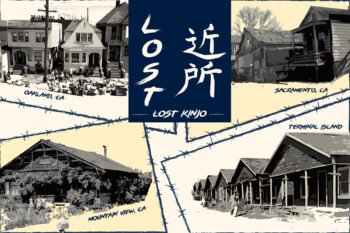By Renee Wang, AsAmNews Intern
There’s an app for that.
But, not an app for the Hmong language. Inspired by this 2009 Apple slogan, Annie Vang was inspired to create HmongPhrases, a Hmong language app. For Vang, HmongPhrases was a way for her to represent her heritage and preserve her language digitally.
“As long as [Hmong] is being taught and used, we won’t lose it,” Vang said. “But even as we shift from country to country, our words start to change and shift. I felt like I have a skill that I can utilize to track this and make sure that when I am gone [the language] still lives on.”
According to first-generation HMoob American scholar and activist Choua Xiong, the Hmong people entered the United States as refugees through forced migration. Hmong people have been made stateless over time and do not have a homeland.
LATEST STORIES
“Through these narratives, history has written them as people with no history,” Xiong said. “It is important to understand that when Hmong people come to the United States, they are also carrying this narrative — historical trauma with them like how do we establish ourselves.”
HmongPhrases launched in 2011, part of an 11-year long process that included two previous iterations of the app. Vang spent the last 10 years in mobile app development. While HmongPhrases is more of a side gig, Vang said that she will take paid time off from her job to devote time to work on her app.
Everything on the app — from coding lines to recording audio — is all done by Vang herself. HmongPhrases includes translations for the Hmong Green and Hmong White dialects, which Vang’s parents both speak. Working on the app has also given Vang the opportunity to bond with her parents.
“My dad and my mom are like my beta testers,” Vang said. “It is fortunate they know how to read and write [Hmong Green and Hmong White] … they’ve been able to make sure I’m pronouncing things correctly and if there are any misspellings.”
The conditions in which the Hmong people entered the United States has affected the preservation of its language, explains Mai Na Lee, associate professor of history and Asian American studies at the University of Minnesota, Twin Cities.
“It is really hard for parents who come out of Laos, traumatized by war to pass [the language] down because there is not only war trauma, but also the basic struggle to survive,” Lee said. “You have parents who are coming out of Laos with … mental health issues and they are immediately thrown into mainstream America where they are forced to navigate the system and learn English. All these struggles are happening on top of [preserving] the oral traditions.”
Furthermore, the oral tradition of the Hmong languages makes its documentation essential.
“[Hmong] society is in oral tradition, there was no written tradition. The oral aspect challenges the ways we can retain the language,” Lee said. “The romanized phonetic alphabet was not invented until the late 1950s by missionaries. Very few Hmong coming to America could … read or write their own language, [making] it harder to retain vocabulary and usage.”
Language, food, games and crafts.
For Vang, these are the things that connect humans. Vang is not only committed to sharing the Hmong language, but as much of Hmong culture as she can. In 2013, Vang created Yumaholic, a cooking app featuring Hmong recipes. Vang is also working on an app for a popular Southeast Asian card game.
“What sparked me creating [these apps] was that I wanted to change the mindset of how people think about passing down things. I felt like growing up in the [Hmong] culture, everything’s not documented,” Vang said. “And so I felt like I was losing a lot of myself … it was the hunger of me trying to hold on to whatever I could and document it in the best way that I knew how … it’s like a [digital] extension of myself.”
The idea of language as key to being is reinforced by Xiong, who states that knowing the Hmong language maintains the Hmong worldview.
“In Dr Xong Xiong’s work, she talks about how knowing a whole language means knowing a whole world view. If we don’t know Hmong anymore, we don’t understand what it means and what our ways of being are,” Xiong said. “It is also important to think about how in Hmong history their language has been taken away from them — Hmong language maintains Hmong worldview. If these very exploitative processes are meant to exterminate the language and ways of knowing and being, then how else can we sustain [it]?”
Girls were not educated. Girls didn’t get the opportunity to go to school and be independent.
These were the things Vang heard, born in Thailand in a refugee camp. Vang remarked that no one would have thought a young refugee girl like her would pursue a career in technology. As a young girl who loved computers, Vang has heard stereotypes that because of her gender, she would not be successful — she didn’t fit the mold others thought she should be. But, Vang has always been motivated to do something out of the box that no one has done.
“We don’t have words for what I do in my language. So I think it is fascinating to just break down barriers that have been there. [Technology] is something that I wanted to [pursue] so badly I didn’t care what other people thought of me,” Vang said.
Last summer, Vang was selected to join an entrepreneur camp by Apple, working with their engineers to improve her app. Vang said the experience working with Apple was a tremendous opportunity that helped boost her self-confidence. It showed Vang the difference she was making in people’s lives — such as young Hmong Americans being able to converse with their grandparents through the app.
“The beginning part of my life was a lot of denial of my identity. The second half of my life has been embracing part of my identity,” Vang said. “I’m super proud of being Hmong. I tell people I’m Hmong all the time. I ask — ‘you want to learn more? I got multiple videos for you … I [also] built an app!’”
When asked if her apps accomplished her version of the American Dream, Vang is quick to respond — definitely, she says.
AsAmNews has Asian America in its heart. We’re an all-volunteer effort of dedicated staff and interns. Check out our new Instagram account. Go to our Twitter feed and Facebook page for more content. Please consider interning, joining our staff, or submitting a story, or making a financial contribution.











